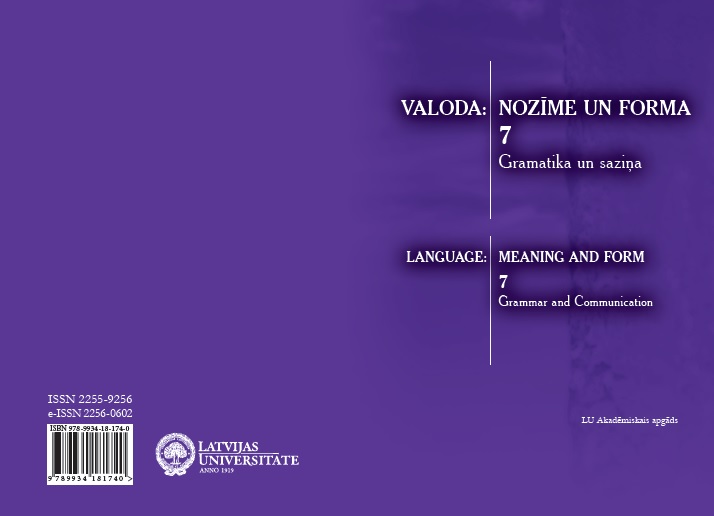Secondary predication in the Baltic languages: a preliminary overview
Secondary predication in the Baltic languages: a preliminary overview
Author(s): Benita RiaubienėSubject(s): Language and Literature Studies, Theoretical Linguistics, Applied Linguistics, Morphology, Syntax, Semantics, Comparative Linguistics, Baltic Languages
Published by: Latvijas Universitātes Akadēmiskais apgāds
Keywords: secondary predication; depictive; resultative; adverbial; posture; semantic map;
Summary/Abstract: The paper discusses semantic and morphosyntactic features of secondary predication in Lithuanian and Latvian. The types of secondary predication, viz. depictives, resultatives and adverbials, are distinguished according to the semantics: adverbials are event-oriented, while depictives and resultatives are participant-oriented (the former denote an event which is simply simultaneous with the main event, while the latter denote an event which is related to the main event via causal relation). However, a rigid delimitation of the three types is impossible as there is a number of constructions which oscillate between them both semantically and morphosyntactically. It is proposed that the zone between depictives, resultatives and adverbials is occupied by transitional, or borderline, types of secondary predication. The borderline types analysed in the paper include posture constructions, “grow up” constructions and “slice” constructions. In order to visualize the relationships between the main and the borderline types the principles of the semantic map method are applied and an extended preliminary semantic map of secondary predication is proposed.
Journal: Valoda: nozīme un forma
- Issue Year: 2016
- Issue No: 7
- Page Range: 165-188
- Page Count: 24
- Language: English

